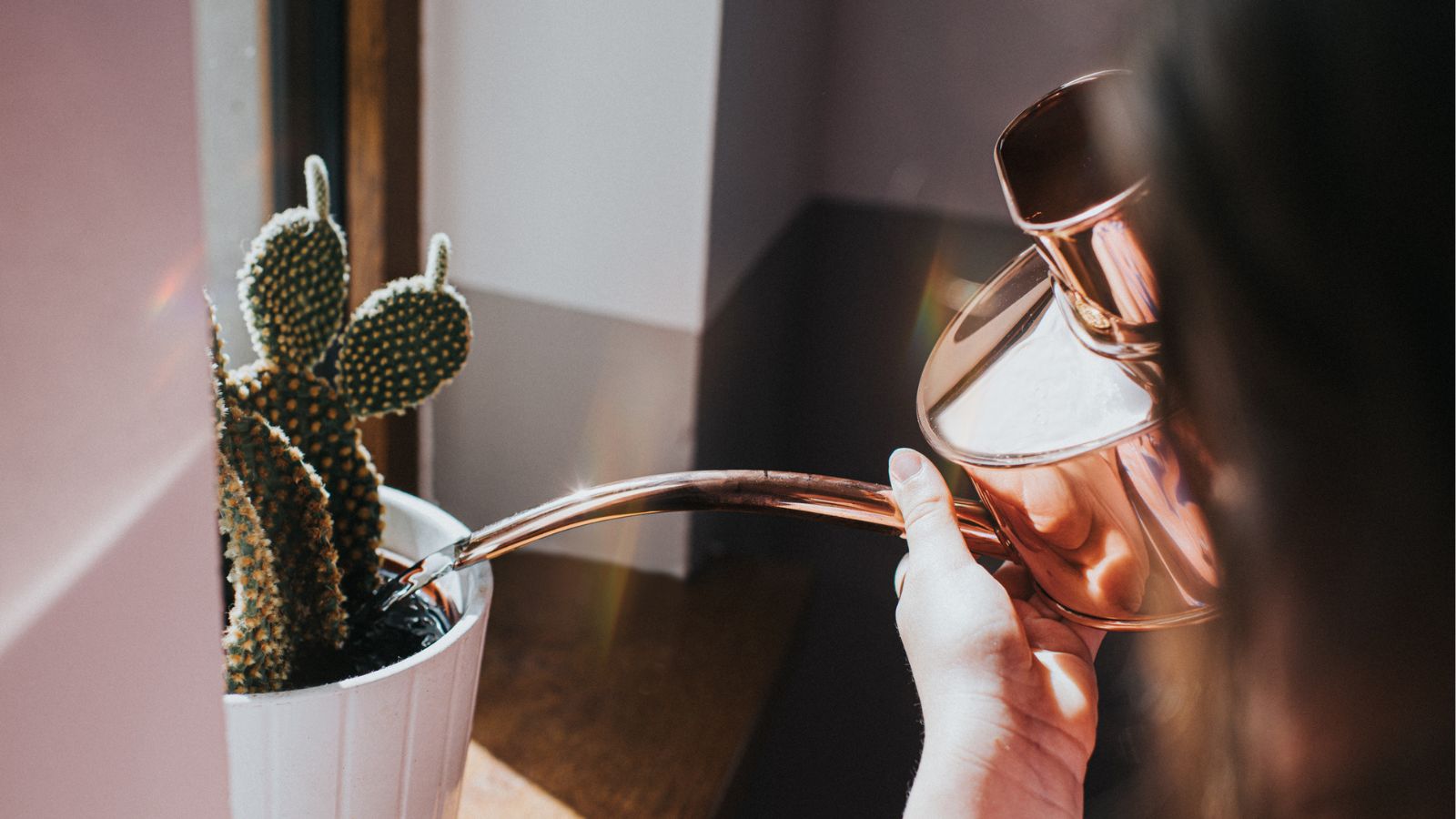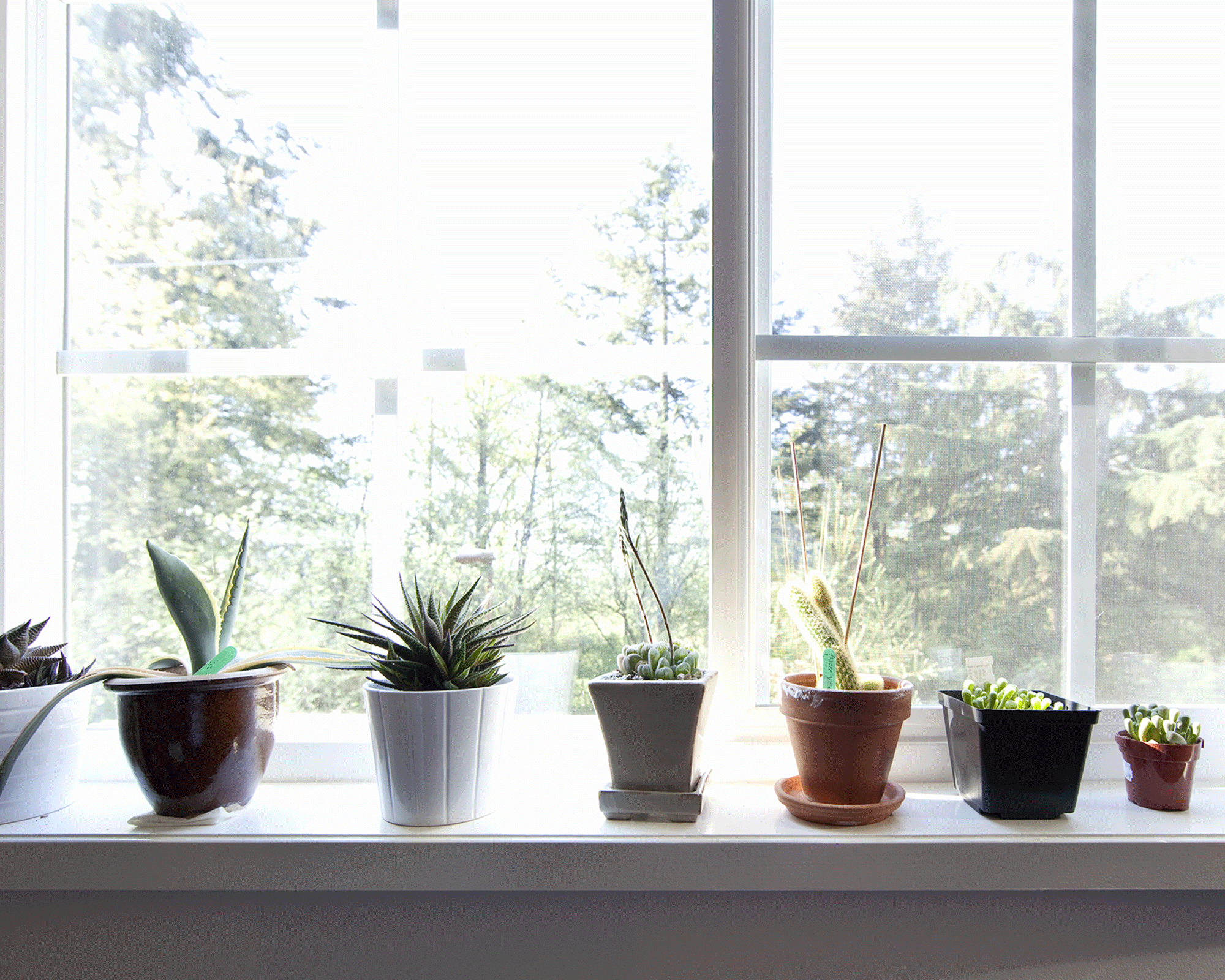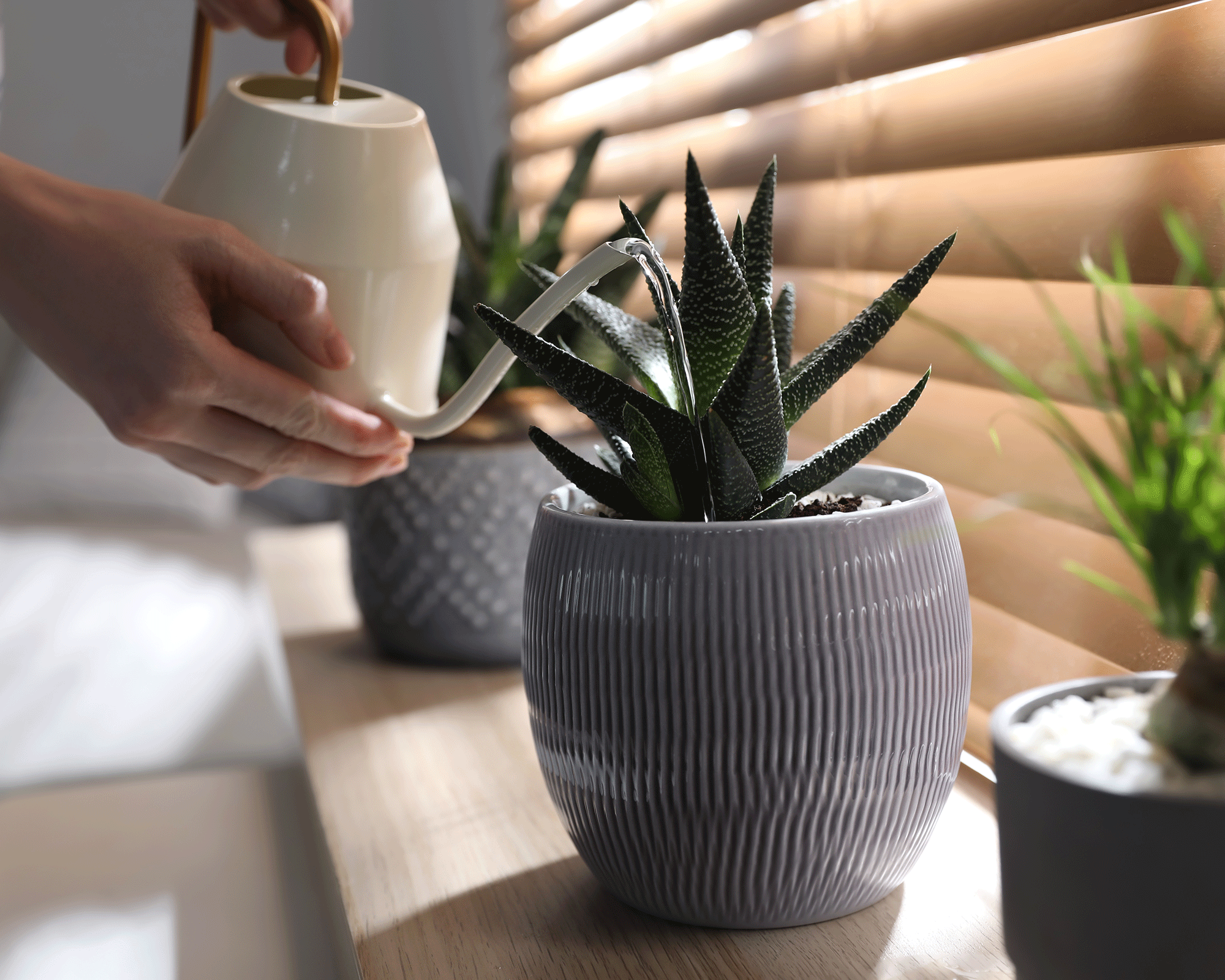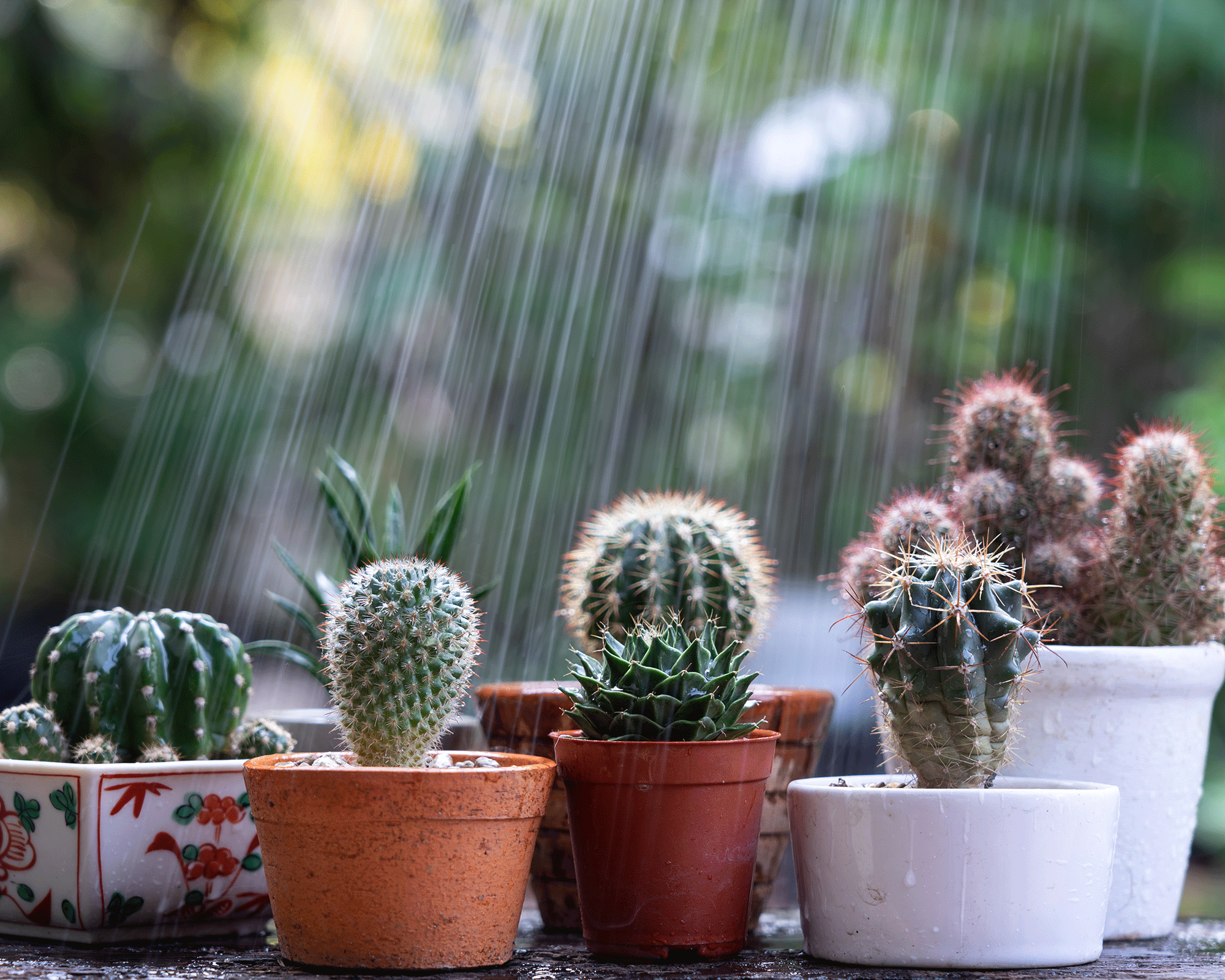How to water a cactus – and how getting it wrong is the quickest way to kill your plant
Despite their easy-going nature, when it comes to watering cacti, there are plenty of ways you can do serious damage. This is how to water a cactus properly


As a houseplant expert, I'm often asked how to water a cactus. After all, it's one of those plants that looks happy, until suddenly it's shrivelled, has yellowing fluffy patches, has become lopsided overnight, or (worst case) the top part has flopped over and no longer seems to be attached to the roots.
I've been caught out myself a few times recently, losing cacti that I assumed were pretty indestructible; I'd even repotted a cactus and thought I'd got the watering regime right, yet lost the plant shortly afterwards.
It turns out that a plant that is supposedly low maintenance can throw some real curve balls. And at the back of your mind you know the decline of your cactus is probably linked to how you've been watering it, topping up too often when you water the rest of your indoor plants. Sound familiar?
Overwatering is so easy to do, and is one of the quickest ways to kill a cactus plant. So, below, I list cactus-watering best practice, and the most common watering mistakes to avoid if you want to keep your cacti thriving.
Do you water a cactus from the top or bottom?

These babies will need more water as they're on a windowsill in direct light which means the soil dries out quicker
There are several different methods for watering cacti, but experts agree the best way is deep watering. During each watering, soak the soil thoroughly until water starts draining out from the pot’s drainage holes.
'This is known as the “soak and dry” method,' says Tatyana Zhuk, plant expert at NatureID. 'Always check the growing medium and water your plant only when the topsoil dries out. Fully soak the growing medium and wait for the water to drain out of the drainage hole. Make sure you remove any pooled water to protect your cactus from the risk of fungal disease.'
Tatyana suggests providing your plant with good drainage to make watering easier by buying a potting mix formulated for cacti; we like this MiracleGro mix from Amazon or make your own combo with any light, loose soil and perlite.
Design expertise in your inbox – from inspiring decorating ideas and beautiful celebrity homes to practical gardening advice and shopping round-ups.
Another popular watering method is placing the cacti pot on a saucer filled with water, allowing the plant to take in as much moisture as it needs through the roots. This is known as 'bottom watering'. Be sure to drain away any excess water as leaving cacti roots in standing water is never a good idea.
Try watering bottles (these are Amazon's best buys) with bendy nozzles or cans with slender spouts (this is Amazon's top buy) that let you direct the water exactly where you want it to prevent your plant from rotting.
How often to water a cactus?

Easy does it. Cactus have much lower watering requirements than other indoor plants
Knowing how often and when you should water your plants is key to a cactus' survival, but this depends on many factors:
Its position
Indoor cacti require less watering than outdoor varieties because their growing conditions are different. A cactus plant’s water requirements also depend on factors like temperature, light and drainage.
Its size
Smaller cacti need less water than bigger ones. On the other hand, those with thinner leaves require more water than a desert cactus with thick modified leaves or stems.
Its age
The age of your plant is also a determining factor. Younger cacti are usually more demanding and need water more often to support their growth.
This means that watering cacti can be a stressful business.
'We know cacti need water because they're plants, but at the same time we've been told not to give them too much water because they're from the desert. The truth is that cacti need regular watering, they just have a special ability to survive drought,' according to the plant experts at West Coast Gardens.
So if you want your cacti to flourish a proper watering schedule is important.
It's hard to pin down specifics but generally:
Small to medium-sized indoor cacti will typically need to be watered every 10 days or more during spring or summer months, and every 4 to 6 weeks during winter.
Make sure you study care guides for each new cactus plant you buy so you're up to speed. Getting to know the type of cactus will help you decide how much water it needs, and the same applies when it comes to watering succulents too.
Does location affect the watering needs of my cactus?

Get to know your cactus plant and its requirements so you can establish the correct watering routine
As we mentioned above, position is definitely an important to factor that influences how and when you water your cactus.
Cacti in direct sunlight versus those positioned in the shade will have different watering needs. When plants are in direct sunlight, the soil tends to dry out quicker, which means they require more watering. Cacti in the shade or partially lighted areas can retain soil moisture for much longer.
In a sunny location that offers cacti plants plenty of heat during the day, your cactus will need watering every week. The only rule is to make sure the soil is dry between waterings. This will stop the roots and lower edges of the plant from rotting.
Temperature and humidity also contribute to your cactus plant’s watering needs. High temperatures make the soil dry out faster, while colder temperatures help the soil to retain moisture.
How long can cacti go without water?

Watering either from the top or bottom works and so does giving your cactus collection a gentle spray from the garden hose
If you are wondering how long cacti can go without water it depends on the variety and how large the plant is. Some cacti thrive with infrequent watering while others such as the Christmas cactus need a more consistent watering schedule.
'Cacti are used to dry spells in their natural habitats, so they can tolerate at least a month-long drought with some varieties withstanding up to three months,' says Tatyana Zhuk. 'However, it doesn’t mean you should neglect your plant and forget about watering it. Lack of water stops your plant from thriving.'
The main problem when it comes watering a cactus is that we care for cacti in the same way as we care for the rest of our indoor plants, but it's not a case of one size fits all. Unlike lush and leafy indoor plants that come from tropical rainforests, cacti are from arid or semi-arid climates and store water in their trunks, which allows them to go weeks without water.
'Watering cacti doesn’t have to be difficult,' says Mo Bhula of The Botanical Archive. 'You can tell when your cactus needs water as the flesh of the cacti will start to wrinkle slightly. It’s best to be consistent with watering so this doesn’t happen.'
Then the trick is to not water again until the entire pot is dry. Less is more when it comes to watering cacti.
FAQs
Should cactus be watered in winter?
During winter months you can cut back on the watering routine, as cacti become dormant during this time. Generally this means watering every four to six weeks. But you may find that some of your cacti don't need watering at all. So it's important to get to know your individual plants.
When the growing season starts in March, begin to water regularly again.
A tip worth knowing is that if you forget to water your cactus for a few weeks (or months), you can usually always bring them back to life with a little bit of water.
Can cactus be watered with faucet water?
When learning how to water a cactus it's best to avoid tap water if you can. The best watering method is to saturate the cactus soil completely using rainwater or distilled water, and stop the watering process when water starts to disperse from the drainage hole in the pot.
Unlike soft water, hard water, or tap water, rainwater contains the right amounts of minerals that a cactus plant needs. Other water types have lots of minerals that can build up in the soil and affect your plant’s health.
Last word: cacti do not tolerate cold water well, so always make sure you use room temperature water to avoid shocking the plant.

Lifestyle journalist Sarah Wilson writes about garden design and landscaping trends for Homes & Gardens. She has studied introductory garden and landscape design, and also has an RHS Level 2 qualification in the Principles of Plant Growth and Development. She is a regular contributor to Homes & Gardens and Livingetc. She has also written for Country Living, Country Homes & Interiors, and Modern Gardens magazines